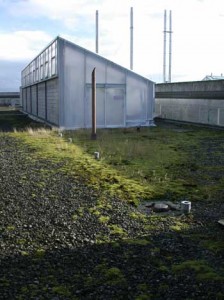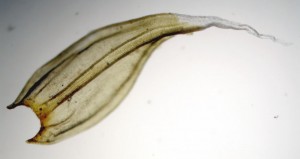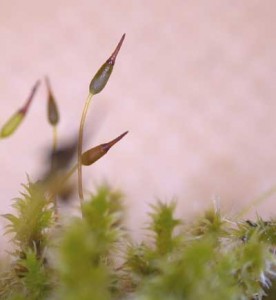Habitat
Racomitrium elongatum prefers open, dry, sandy soil.
Gametophyte
Overall Structure:
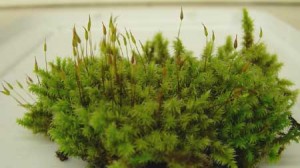 Racomitrium elongatum, also known as “elongate moss”, has an acrocarpous growth form with shoots that are loosely attached to the substratum. There are commonly many short lateral branches.
Racomitrium elongatum, also known as “elongate moss”, has an acrocarpous growth form with shoots that are loosely attached to the substratum. There are commonly many short lateral branches.
The hydrated shoots form bright, yellow-green mats or rounded tufts. Dry shoots have a grayish appearance. These dry shoots are easily fragmented, the fragments probably propagate asexually.
Leaf:
The leaf apex is twisted, with a short white awn.
The leaf cells are elongate, sinuose and papillose. The marginal cells are more elongate than the laminal cells.

The leaf laminae are unistratose, while the costa is multistratose. The margin is recurved and unistratose.
Male gametophyte:
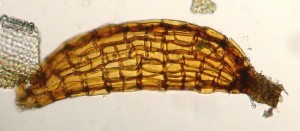 Male reproductive structures, known as antheridia, are located on the male gametophytic shoots. An antheridium is sac-like and contains sperm, that may fertilize a female archegonium.
Male reproductive structures, known as antheridia, are located on the male gametophytic shoots. An antheridium is sac-like and contains sperm, that may fertilize a female archegonium.
Sporophyte
Sporophytes are dark red-brown when mature.
Sporangium:
The sporangium is long with an elongate operculum. The operculum is usually pleated.
Seta:
Mature seta are twisted near the sporangium. The sporophytes in this photo however, are not fully mature.

